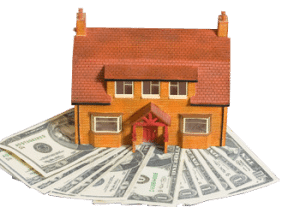We’re breaking records on the U.S. housing market!
Evidently, during the month of August, national home sales reached their highest levels in more than six years, according to a recent report from the Commerce Department.
This is incredible! That means that sales activity has returned to the levels it was pre-bubble burst. And this spells great success for anyone interested in listing their home on the market.
A Closer Look at US Home Data
According to Commerce Department figures, new home sales jumped 18 percent to a 504,000 annualized rate, which is the strongest it’s been since May 2008.
Not only that, but this rate is even higher than the highest forecast made by a Bloomberg survey of economists.
This one-month increase shattered a 22-year record. That’s because the last time the US housing market saw a one-month increase this big was 1992.
Here’s what else the Commerce Department revealed in its report:
- Economists surveyed in the Bloomberg report said the pace would increase between 405,000 and 455,000.
- The median forecast of 74 economists was that the pace would increase 430,000.
- The median sales price of a new house increased 8 percent year over year in August, to $275,600
- Home purchases increased in three of four U.S. regions. The West led the group with a 50 percent jump.
- The housing inventory (given the current sales rate) dropped to 4.8 months from 5.6 months in July.
- There were 203,000 new houses on the market at the end of August.
- Existing home sales decreased 1.8 percent to a 5.05 million annual pace last month. This occurred after existing home sales reached a 10-month high of 5.14 million in July.
- Housing starts decreased 14.4 percent to a 956,000 annualized rate. This occurred after July’s 1.12 million pace was the strongest it’s been since November 2007.
Canada Home Sales See Encouraging Numbers as Well
- Canadian national home sales increased 1.8 percent from July to August.
- Actual (not seasonally adjusted) activity were 2.1 percent above August 2013 levels.
- The number of newly listed homes decreased 1.2 percent between July to August.
- The MLS Home Price Index increased 5.3 percent in August when compared to last year.
- The national average sale price also increased 5.3 percent in August when compared to last year.
Moving The US Real Estate Market Forward
Experts say that the housing market has been growing in fits and starts but that steady growth is what will be needed in the long-term to effectively stabilize the market.
Still, home sellers can be encouraged by these recent numbers as they do demonstrate that the market is headed in the right direction!
Check back here soon as we continue to watch the housing market, looking for trends that impact you as home buyers and sellers.


